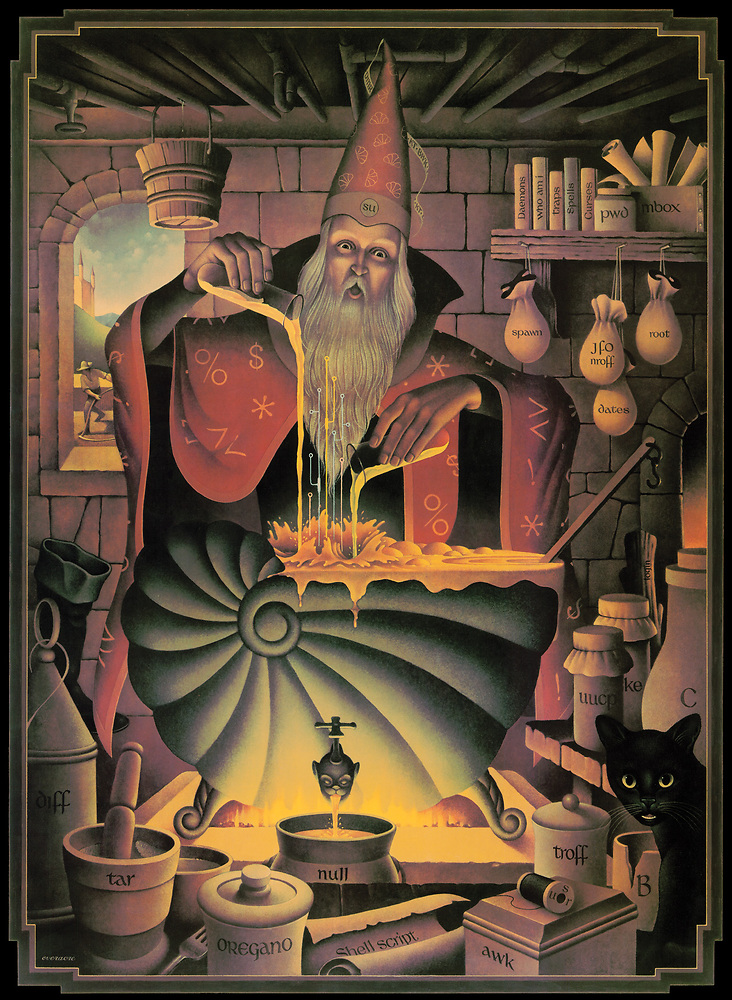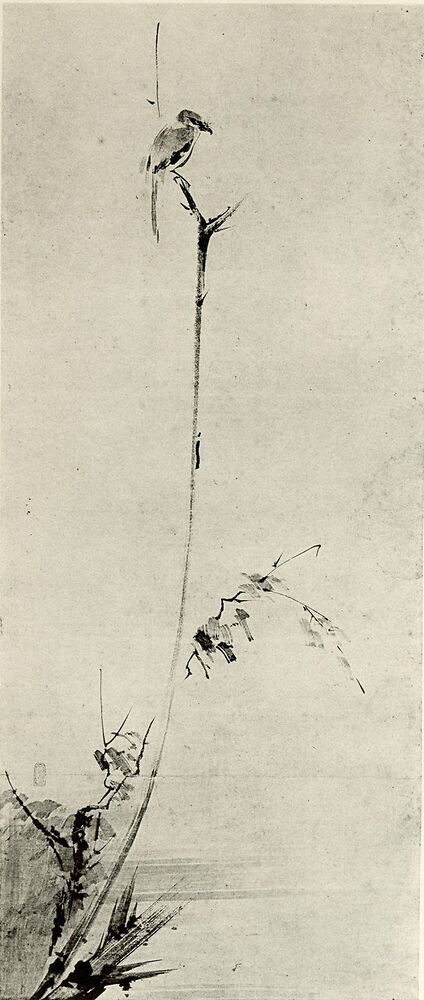From the outside, drawing/painting and computer science may look irreconcilably different. Yet, many aspects of both fields can be drawn together: put into mathematical language, we can establish some sort of morphism between the two fields (I wonder how rigorously such a connection can be made).
Note the informality of the mapping: the goal is, by squinting a little, to help artists and computer scientists to navigate the theoretical aspects of an unknown field through familiar notions.
Note also that we will use “drawing” and “painting” interchangeably. Finally, we will mostly focus on fine-art, to be defined as a technically involved realistic depiction. Most of what we’re expressing would also be valid for abstract or naive forms of visual arts, but the situation, although fascinating, is too complicated to be explored here.

UNIX Magic poster, 1986
by
Gary Overacre
A reason for the existence of this link is that painting, over the course of time, in order to be taught, has been rationalized, structured, systematized, optimized, refined, and has assimilated some advances of science. For instance, instead of relying purely on well-known paint mixes, as advised by Cennino Cennini in his Il libro dell’arte, modern artists often rely on abstract mental models such as HSV or an explicit RGB.
Some principles such as the influence of complementary colors were already known in the Middle-ages: for instance, the pinkish skin of Christian icons was applied on a layer of dull green (see CXLVII, How to Paint Faces):
When you have done the draperies, trees, buildings, and mountains, and got them painted, you must come to painting the faces; and those you should begin in this way. Take a little terre-verte and a little white lead, well tempered; and lay two coats all over the face, over the hands, over the feet, and over the nudes.
The existence of such links between two apparently unrelated areas, one of them being art, has already been observed historically, for example in Japan, where it has been tied to military strategies
When I apply the principle of strategy to the ways of different arts and crafts, I no longer have need for a teacher in any domain.

Shrike in a barren tree, 枯木鳴鵙図, Koboku meigeki-zu
by
Miyamoto Musashi (宮本 武蔵, c. 1584 – 13 June 1645)
Comments
By email, at mathieu.bivert chez: